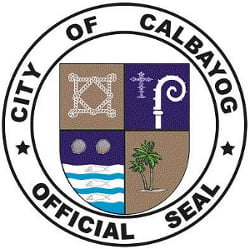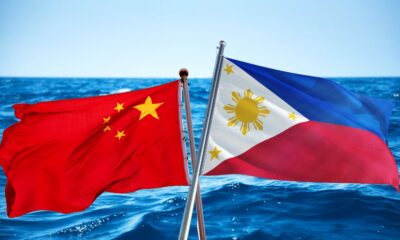History
Today in PH History
16, 1948, Calbayog City in the island of Samar, was created from the 3 contiguous towns of Calbayog, Oquendo and Tinambacan through Republic Act No. 328. The Act itself was signed into law on July 15, 1948 by President Elpidio Quirino


On October 16, 1948, Calbayog City in the island of Samar, was created from the 3 contiguous towns of Calbayog, Oquendo and Tinambacan through Republic Act No. 328. The Act itself was signed into law on July 15, 1948 by President Elpidio Quirino but the first set of city officials were sworn in on a much later date of October 16. Also known as the Charter of the City of Calbayog, Senate President Jose Avelino, a native of Calbayog was instrumental in the passage of Republic Act No. 328. Upon its creation, Calbayog was the 19th city of the country.
Today the City of Calbayog comprises of 3 districts corresponding to the original 3 towns that were pulled together. It has 157 barangays, 25 of which are urban and the rest are rural.
Calbayog history
Calbayog began as early as 1600 in a settlement called Hibatang, presently called Barangay Anislag, along the riverbank of Oquendo River, about ten kilometers north from the city. It had 2,000 inhabitants under the spiritual guidance of a Jesuit, Father Ignacio de Alzina. Since the place was often flooded especially during stormy days and made the settlement unsafe, the settlers left the place in “balotos” (banca) and hastily rigged bamboo rafts following the river towards the sea. They would stop at Cahumpan (now Barangay Cahumpan) and eventually settled there to start life anew.
As more settlers came, some crossed the river to Sabang (now Barangay Trinidad). After a period of time, the restless settlers moved again and settled at Taboc (now ] Obrero), a settlement facing the open Samar Sea. The place was once a vast swampland, which extended from the present Nijaga Park.
The name Calbayog originated from a place called Taboc. As legend says, the place was once abounded with “Bayog” trees. They are cut and burned down for fuel in making “Cal” (lime) out of seashells and corals. From these two things, the Spaniards named the place “Calbayog”.
Another legend says that there was once a man named “Bayog”. It so happened that there was no other way leading to the sea except through Bayog’s place. Fishermen used to say “tikang kami kan Bayog” (we came from Bayog) or “makadto kami kan Bayog” (we are going to Bayog). One day, a guardia civil asked for the name of the place but a fisherman mistakenly answered “tikang kami kan Bayog”. The Spaniards took the last words, kan Bayog for the name of the settlement. A lot of tongue-twisting and mispronunciation changed the original name to Calbayog.
Calbayog rose to political and religious prominence only after the American era. On April 10, 1910, Pope Pius X separated the island provinces of Samar and Leyte from the Diocese of Cebu, and erected the Diocese of Calbayog comprising both island provinces. Other dioceses in the region were only created later.
References
- National Statistics Coordination Board
- Calbayog Wiki (Wikipedia)
Article: Kahimyang Project














